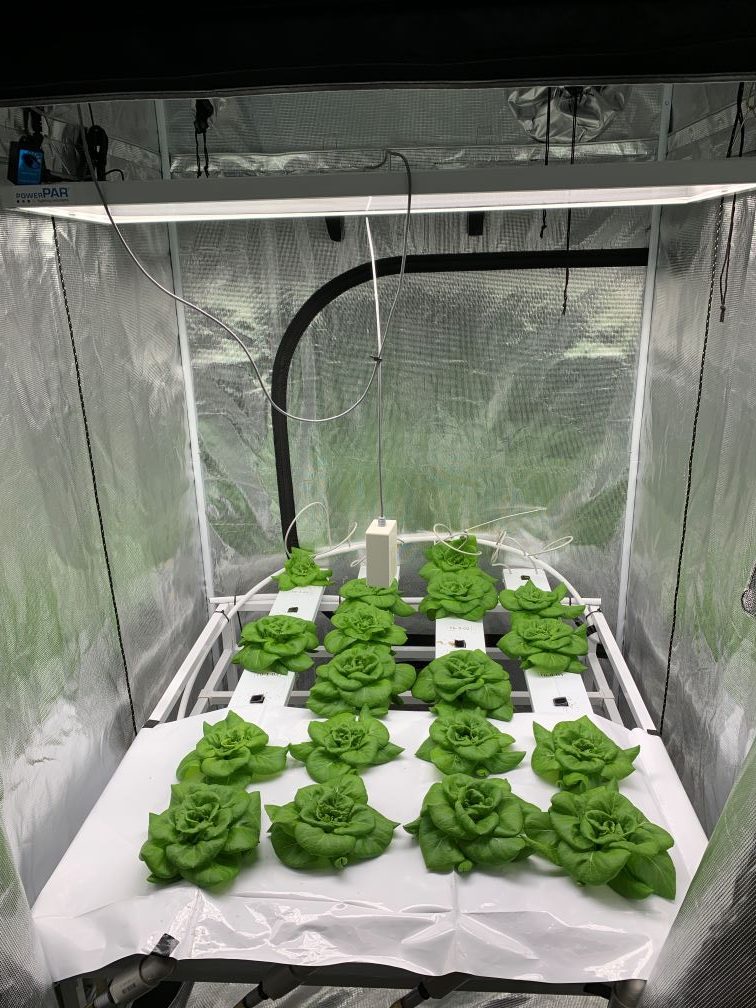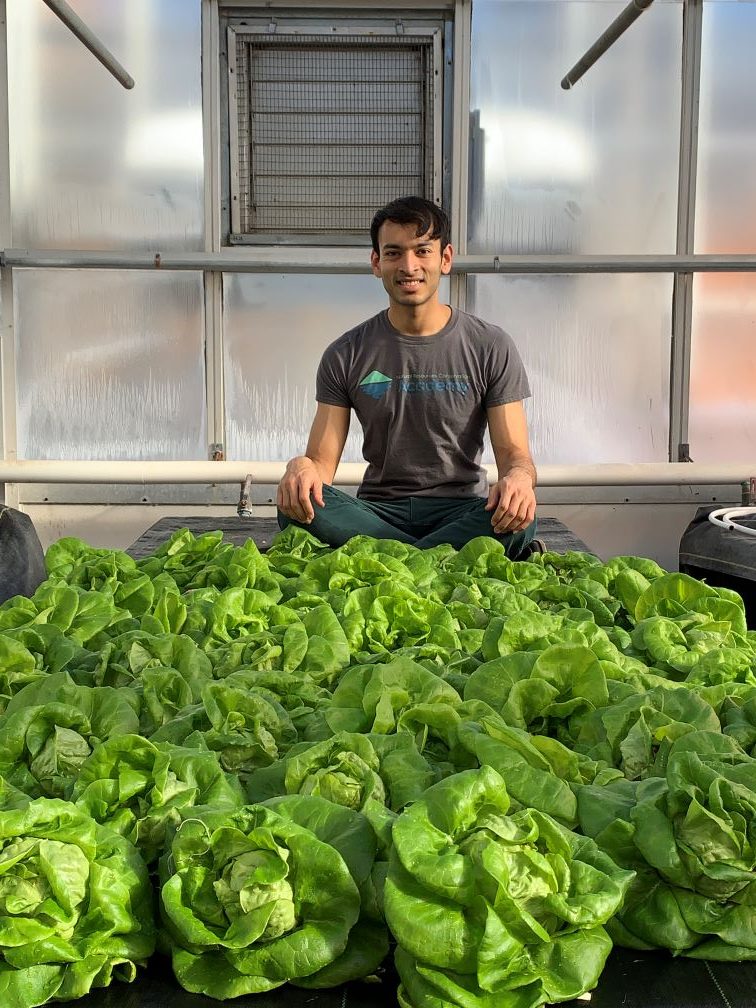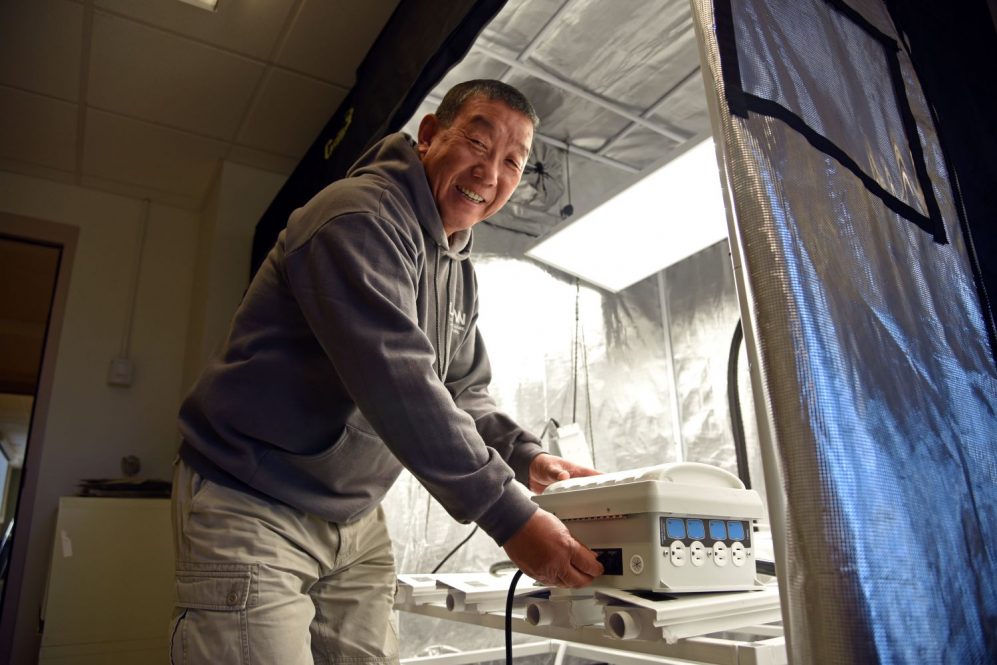With urbanization increasing worldwide, the popularity of urban gardening is on the rise. People are growing food on rooftops, balconies, and backyards – but how about in abandoned warehouses or basements?
Professor Xiusheng (Harrison) Yang in the College of Agriculture, Health and Natural Resources has invented a technology, GREENBOX, that can grow high-quality food in existing indoor urban spaces.
Yang, a professor in the Department of Natural Resources, first had the idea to develop GREENBOX five years ago after observing the unmet need to grow food locally in urban environments.
“There’s a need to produce food locally in urban areas where people need it the most,” Yang says.
Current GREENBOX models are about the size of a standard commercial pallet – 48 inches by 40 inches. Yang says that the height can be variable, depending on the crops, reaching upwards of 84 inches high.


The insulated boxes contain programmable LED lights that Yang and his team can adjust to fit the light needs of a specific crop and a hydroponic growing system. Hydroponic systems grow plants without soil, using water-based mineral nutrient solutions instead.
Yang’s team can control the temperature, humidity, and carbon dioxide levels in the GREENBOX and monitor the plants’ progress remotely using the video systems with which each GREENBOX unit is equipped.
“It’s a true plant factory,” Yang says.
Yang and his students conducted a feasibility study where they demonstrated that they could successfully grow 48 heads of lettuce (24 heads each in two units) in 30 days, through every season in Storrs, Connecticut. They published their results in Agricultural Sciences in 2021.
Yang emphasizes that this feasibility study was a proof-of-concept and GREENBOX’s technology can easily be scaled up.
“It creates a lot of flexibility for food production so it can meet the needs of different seasons and different varieties with very limited space,” Yang says.
GREENBOX offers many advantages over traditional greenhouses. Because they are designed to be set up in unused urban structures, GREENBOX units greatly reduce transportation costs, both in terms of money and carbon emissions.
Further, GREENBOX does not face many of the challenges traditional farming does, such as weather-related disruptions to the growing season or pests. The latter also means there is no need to apply pesticides to GREENBOX crops.
GREENBOX also uses less energy and water than traditional greenhouses, which Yang outlined in another publication for the American Society of Agricultural and Biological Engineers.
Yang also published a financial feasibility study in 2022 showing that GREENBOX would be profitable in major cities across the U.S. Yang’s study included Dallas, Los Angeles, Miami, and New York City. He found that GREENBOX was most profitable in cities, like Dallas, where the cost of renting space and labor were lower, but it would still be profitable in locations like New York City where these costs are some of the highest in the nation.
Yang says the crops best suited for growing in GREENBOX are leafy greens, like lettuce, as well as cannabis, since these plants have low maintenance needs and do not need soil to grow, like potatoes or carrots would.
“We see a lot of potential for the technology in urban applications,” Yang says.
Yang is now working with his students to analyze how to optimize the heating and ventilation systems by testing alternative materials and designs.
GREENBOX’s development has been supported by funding from the USDA Hatch Act.
Follow UConn CAHNR on social media



